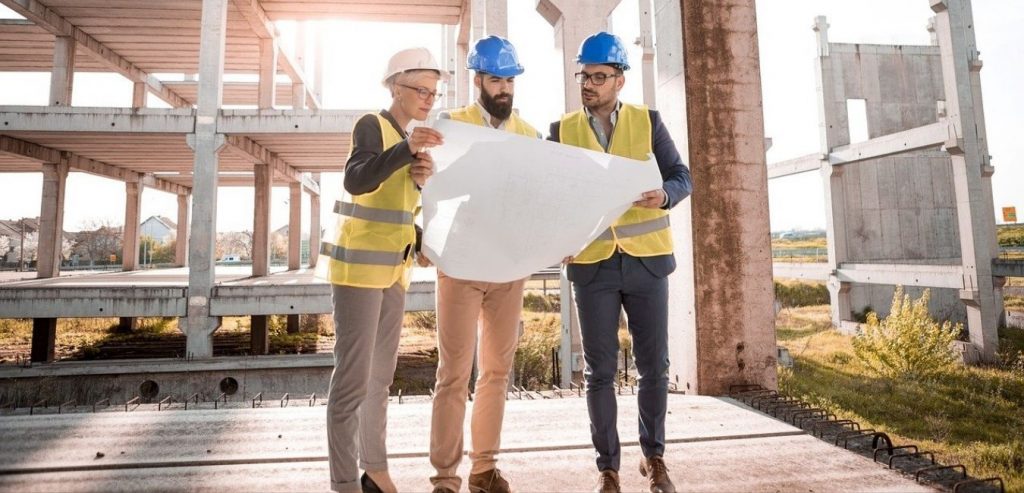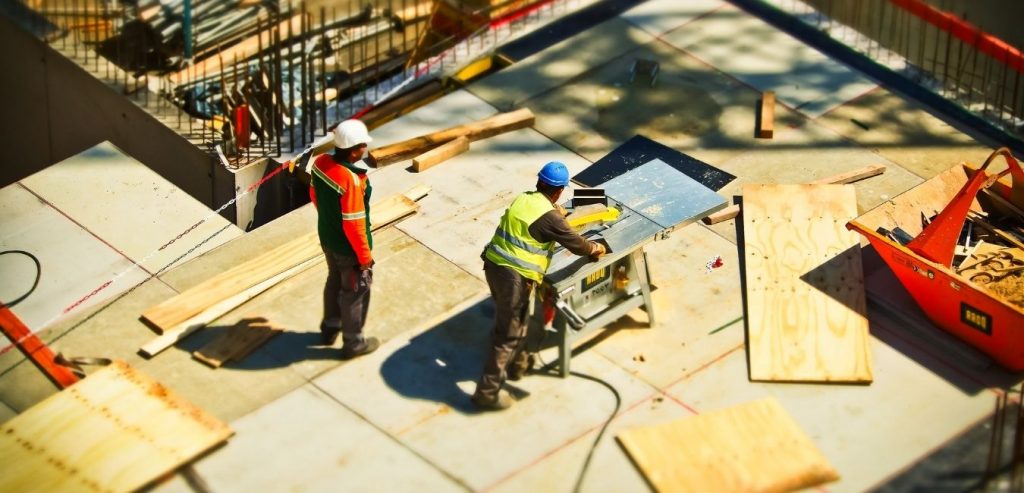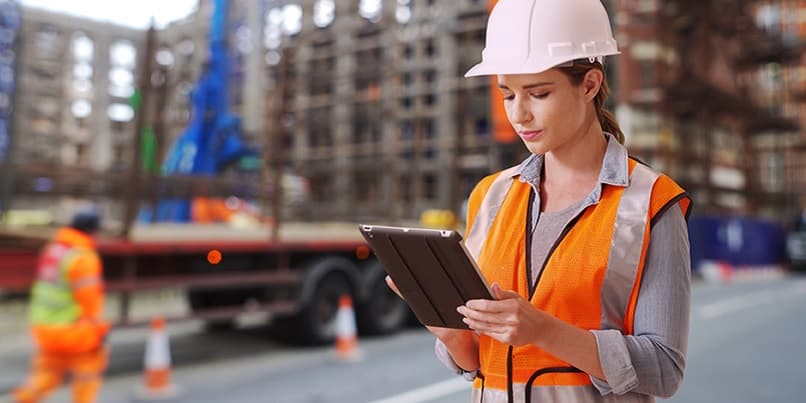Construction takeoffs are a crucial component of any construction project. An accurate takeoff gives both the client and contractor a firm outline of the total material cost for a project.
Depending on the project’s size and scope, construction takeoffs can vary from relatively simple to incredibly complex.
The construction cost estimating process revolves around the construction takeoff.
Because of the importance of this component of construction cost estimating, this article will answer the question, “what is a construction takeoff?”
Answering this question will shed light on how a construction takeoff is crafted, the core components of a construction takeoff, and what factors you should consider when creating a construction takeoff.
Table of Contents
Construction Takeoffs Explained
If you work in the construction industry, you’re likely familiar with the term ‘construction takeoff.’
Construction takeoffs go by many names. Most commonly, it is referred to as a “take-off,” “construction material take-off,” or “construction takeoff.”
Both of the terms “take-off” and “takeoff” are used interchangeably. While the many names for a construction takeoff can be confusing, they refer to the same thing.
At its core, the construction takeoff’s purpose is to give the estimator a breakdown of all of the components required to complete a construction project.
It doesn’t matter if it is a new project or a renovation since both require a construction takeoff.

What is involved in a construction takeoff?
To create a construction takeoff, an estimator will need to quantify every component required to complete their project (known also as a material take-off).
Material takeoffs include all of the raw materials you’ll need for the project, such as wood, rebar, piping, and concrete.
Each of these materials is quantified, and a price is assigned to each. These two steps are usually done separately, with the estimator first creating a quantity takeoff list and then assigning a cost to each material.
While creating a comprehensive list of materials for a project can seem daunting, assigning accurate prices to each material is often more challenging.
How important is accuracy in a construction takeoff?
In order to be effective, a construction takeoff must be accurate.
Estimators must ensure that their material take-off is comprehensive, meaning it covers all of the materials that will be required to complete a job.
An accurate material take-off is essential for arriving at an accurate estimate for the cost of a project.
Creating a comprehensive construction takeoff can be extremely time-consuming if done by hand.
To create a construction takeoff, the estimator must understand how to read blueprints and draw item quantities from the outline. The final product of a construction material takeoff is the total material cost for a project. Because of this, the construction takeoff is essential for the overall estimating process.
What are the challenges of a construction takeoff?
Taking a look at what is included in a construction takeoff will illustrate why they can become very complicated.
One of the challenges that many contractors run into when creating a construction takeoff is figuring out what is included in a takeoff.

The idea behind takeoffs
The concept behind a construction takeoff is relatively straightforward.
An estimator itemizes every material that is necessary to complete a project and assigns it a price.
For relatively simple projects, an experienced contractor may create an accurate list of materials in their head.
While this is not technically a material takeoff, it does illustrate the fact that there can be very simple material takeoffs for small projects. That being said, in practice, a material takeoff is often much more complex.
Larger construction projects can be a time-consuming process that involves a team of estimators. There are some ways to streamline the construction takeoff process, including the use of construction estimating software. Still, it is essential to understand that construction takeoffs can be very demanding for complex projects.

What is Included in a Construction Takeoff?
First, a takeoff will include all materials that are required to finish the project. The types of materials that are included in a construction takeoff will be determined by the project.
Typically, the materials in a construction takeoff include:
- Lumber
- Steel
- Concrete
- Sand
In addition to raw materials, a construction takeoff will include a comprehensive list of any prefabricated components required for the project.
These include things like:
- Electrical cabling
- Light fixtures
- Pipes
- Tile
- Windows
The estimator will have to assign a quantity to each material listed in a construction takeoff.
How an item is quantified depends on the type of item.
- For prefabricated materials, a simple count is usually sufficient
- For things like lumber or piping, the estimator will need to provide accurate length requirements
- Components like roofing, flooring, or cladding will be quantified using area For some components, such as concrete, the quantity will need to be provided in volume
A precise quantity for each component is a crucial part of the construction takeoff but is also one of the most challenging aspects of the construction takeoff.
Without the use of digital takeoff software, the estimator must perform complex equations to arrive at accurate quantities for things like concrete or asphalt.
Each material will need to be specified to ensure that the pricing is accurate and the correct materials are ordered.
If a project has specific requirements for materials, then they need to be noted along with the quantity required.
During this part of the takeoff process, the estimator will draw on the engineer’s expertise by following any blueprints provided. The materials in the takeoff must match the requirements set forth by the engineer and architect.
If a specific type of lumber or grade of steel is required, this information would be noted on the construction takeoff.

How are costs worked out in a construction takeoff?
After the estimator has provided a quantity and description for each required material in the project, they must then assign a price to each item.
Determining the price of materials is one of the most time consuming and challenging parts of the construction takeoff process.
Prices must be accurate to ensure that the materials cost for a project doesn’t run over budget.
Accurate prices in a construction takeoff are, therefore, crucial for guaranteeing a project is profitable.
During this part of the construction takeoff, the estimator will often seek out bids from material suppliers. Experienced contractors may already have prices for commonly used materials, streamlining this part of the construction takeoff process significantly.
It is important to note that while a construction takeoff must be comprehensive, certain items generally aren’t itemized in a granular fashion.
For example, a construction takeoff won’t include the exact number of screws or nails required for a project. Counting each of these small components required for a project would be labor-intensive and would often be an exercise in futility.
Instead, these items can be roughly estimated and won’t significantly impact the overall material costs for a project should the estimate be slightly off.
The expertise of the estimator’s expertise will be necessary to determine how many of these items to order.
What Isn’t Included in the Construction Takeoff
Knowing what isn’t included in a construction takeoff is just as important as knowing what is included in one.
Labor costs are an essential part of the construction cost estimating process but aren’t included in a construction material takeoff.
Calculating the labor cost of a construction project involves its own complex set of considerations, including:
- Whether the labor is union or non-unionLocal wage variations
- Skilled labor requirements
In addition to labor costs, any other expenses required for completing the project will be added in another part of the estimating process, such as:
- Equipment rental fees and associated operational costs
- Storage fees
- Shipping and transportation fees
- Office overhead costs
While each of these is important to quantify accurately, they will be included in a different part of the construction cost estimating process.

Types of Construction Takeoffs
Construction takeoffs vary depending on the type of construction project.
Subcontractors, such as electricians and plumbers, will produce a different construction takeoff than a general contractor.
However, while these two takeoffs may look different, they follow the same fundamental process.
Aside from these differences, there are generally two types of construction takeoffs; manual and digital.
Manual takeoffs
Manual construction takeoffs have existed since the earliest construction projects.
In a manual takeoff, the estimator or contractor will read the blueprint, list each component required, including the type of material and essential considerations such as length, volume, or area of the material.
Once each material has been quantified, the estimator then has to assign a price to each by hand and then calculate a final material total.
The disadvantage of manual takeoffs
There are a couple of downsides to manual construction takeoffs.
To begin, they can be extremely time-consuming, depending on the complexity of the project.
Second, manual construction takeoffs are prone to errors. Materials can be miscounted, counted twice, or not included at all. It is much easier to miss the mistakes in a construction takeoff when completing it by hand.
Finally, manual construction takeoffs require a high degree of skill to complete to be accurate. The estimator must be able to perform complex calculations and verify that they are correct.
Digital takeoffs
In contrast to a manual takeoff, digital takeoffs offer many benefits.
A digital takeoff is a takeoff completed in a construction cost estimating software platform that offers takeoff capability.
Not all construction cost estimating software can help the contractor perform a digital takeoff.
A digital takeoff automates many complicated aspects of the construction takeoff process. However, features associated with a digital takeoff will vary depending on the platform.
How do digital takeoffs work?
Some digital takeoff software gives the user the ability to upload a blueprint directly into the software suite. From this blueprint, the software can pull a comprehensive list of all material requirements for the project. A contractor or estimator can then make any adjustments they need to, such as increasing the number of materials required for the project manually to account for material waste.
Once the estimator is satisfied with the materials list, they can then use the software to apply a price to each item.
Contractors that commonly use the same materials and have accurate prices for those materials can build a database of their materials costs.
Some construction takeoff software platforms can draw material costs data from databases such as RS Means, which offers a comprehensive database of construction material data adjusted based on location.
If the software platform doesn’t have this capability, the estimator will need to manually populate their materials price database.
Digital takeoff software can also assist the contractor by allowing them to adjust material prices dynamically. This is useful to account for market fluctuations in materials prices, which can significantly impact a construction project’s profitability.
Once the prices have been assigned for a digital takeoff, they can then usually export the data in various formats.
Some software platforms have integrated reporting functionality, which can offer tremendous time savings.
For manual takeoffs, once all of the data has been gathered, the estimator must then create a detailed takeoff to provide the client or design team. Whereas with digital takeoff software, this process is much more straightforward.
The digital takeoff data can be exported to another program that can generate reports. If the platform has integrated reporting functionality, the report can be generated without ever leaving the program.
This saves time by avoiding having to enter data twice while also increasing the accuracy of the final takeoff, allowing contractors and subcontractors to spend less time creating reports and more time bidding on projects.
Who completes a construction take off?
Estimators typically do construction takeoffs. They do it to map out the labor, material, and equipment costs to make a competitive bid.
Takeoff vs. estimate
Takeoffs refer to the quantity of materials required for a project. At the same time, the estimate uses the takeoff quantities and the current cost of materials to know the total cost of materials needed.
Benefits of takeoff software
Quantity takeoff allows construction professionals to plan and adjust their projects according to the final expenses calculated.
Learning to estimate costs is helpful as it keeps the project on budget. In construction takeoff, for example, construction personnel like estimators can measure the square footage of an area to determine the flooring needed or count light fixtures to identify the amount of wiring the contractor buys for the building. In addition, the project scope and number of required materials will affect the period of construction takeoff and optimization of workflow.
FAQS
What is an example of construction take-off?
To perform an accurate material takeoff, you require a detailed description of the exact measurements of the materials for the construction project. Then, you can perform a quantity takeoff by hand or using the software.
Manual takeoffs
In manual takeoff, an estimator lists all materials they need for the construction job based on the original blueprint. After recording the materials, you should determine the total pricing by hand. Hand calculations are standard since the contractor controls final costs and has detailed information on the materials needed and their prices.
Digital takeoffs
Digital takeoff makes estimators upload a blueprint and all needed materials into a takeoff software program. Once uploaded, the software analyzes this information and allocates a price for each item. Next, it performs a digital calculation to give the total material cost.
By giving each a fee, digital takeoff ensures accurate calculations of the total cost of materials.
Why is it called a takeoff in construction?
Below are some reasons why construction takeoffs are essential for projects:
1. Quality takeoffs determine project feasibility based on the scope and the total material cost. The project should be within the allocated budget and have materials that meet the client’s needs.
2. To make profits after completing the project, you must make a material takeoff to guide estimators to get accurate calculations.
3. Show the fee for all materials needed. Material takeoffs will prevent you from overspending or underspending on materials.
How do you calculate a construction take-off?
Choose the unit of measurement for each material, then reference specifications and blueprints to accurately know the type and number of materials the client needs.
After assigning a unit of measurement, you can count all materials.
Construction measurements can be in the following;
Linear feet: Most measurements for wiring work, like electrical cables and copper wiring, are in linear feet.
Each: Buying one item individually at a time is measured in each. Examples of such things are; electrical outlets and light fixtures.
Cubic yard: Equipment needed in landscaping and excavation are in cubic yards like soil and concrete
Square feet: Materials like drywall, flooring, carpeting, roofing, tilting, paint, and ceiling are in square feet.
After counting, proceed to calculate the costs. First, communicate with your supplier to get the standard price of each material. Then, make changes to suit your budget and project objectives.
For example, if a floor tile costs $20 per square foot, if you buy 20 square feet, the cost will be $400.
Do a final report and consider the quantity of each material alongside its price. Materials are quantifiable by;
Area: The square foot (sq) measures; drywall, flooring, roofing, and sheathing giving accurate measurements.
Count: You can individually calculate items by counting them. These items are; light fixtures, windows, wall studs, doors, and other similar items.
Length: Wire, conduit, lumber, and similar items are in linear feet or yards.
Volume: Items like sand, concrete, paint, and gravel are in cubic feet and yards
To conclude
Whether you’re planning a construction project that is big or small, you must do an accurate construction takeoff.
While the process isn’t a simple one and can be time-consuming, digital takeoffs help ease the workload and provide better accuracy than a manual takeoff.
Ultimately, construction takeoffs build a picture of what the project looks like in time and expense. This knowledge will allow you to make any necessary changes before the project begins instead of discovering issues several months along.

